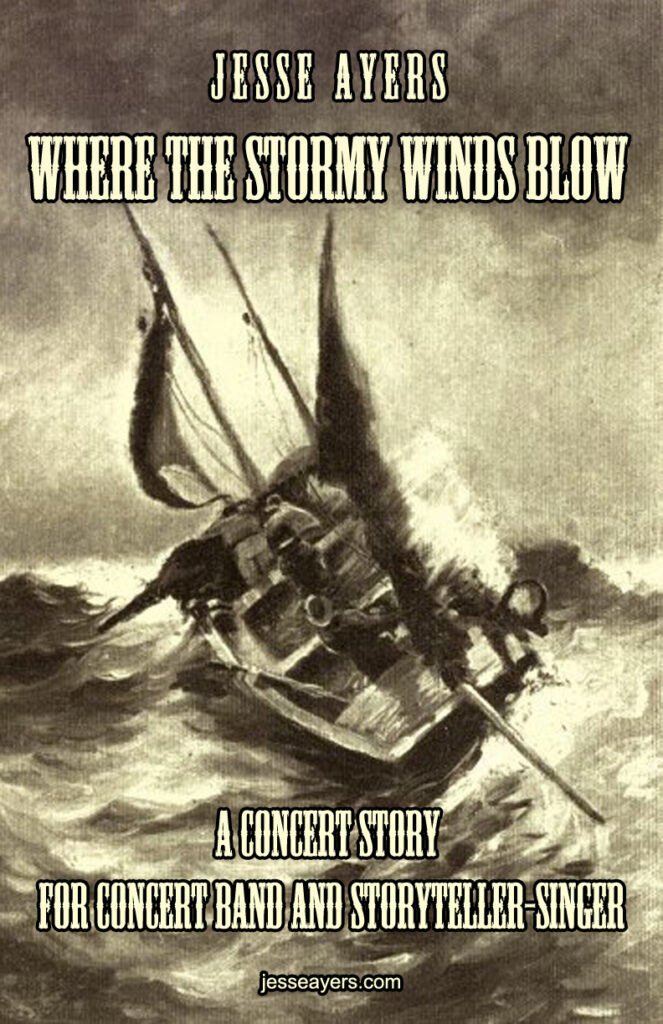
A concert story for band and singer-storyteller
Audience participation
Based on a true story from Beaver Island in Lake Michigan
Commissioned by the Michigan City Municipal Band
17 minutes. Grade 3.5 – 4
SCROLL DOWN FOR VIDEO AND PROGRAM NOTES
Complete recording
Luther Summer Music Festival Band
Jeffrey Scott Doebler, conducting; Daniel Greco, singer-storyteller
BEGIN AT TIMECODE 1:19:00
Performed by
• Luther Summer Music Festival Band, Jeffrey Scott Doebler, conducting
• Valparaiso Univ. Chamber Concert Band, Jeffrey Scott Doebler, conducting
• Indiana All-District Honors Band Jeffrey Scott Doebler, conducting
• Michigan City Municipal Band, Jeffrey Scott Doebler, conducting
Program Notes
This is a true story of an 1873 maritime incident on Lake Michigan somewhere between Beaver Island and Traverse City.
At this time, almost all the residents of Beaver Island were Irish immigrants for whom Gaelic, not English, was the primary language, and Beaver Island had become the largest supplier of fresh-water fish for the entire country. Fishing was central to the Island’s way of life, and the Islanders were all too familiar with the dangers of being at sea.
The story told in the present work, and much of the narration, is drawn from primary sources: 1937 Library of Congress field recordings of oral accounts given by two men then in their 70s, Dominick Gallagher, Jr. and Andrew Gallagher (not related), children at the time of the 1873 incident, but with personal acquaintance of all involved.
This work also utilizes a Lake Michigan sea shanty known as “The Gallagher Boys,” the text of which was composed only one year after the incident by Dan Malloy of Beaver Island (to music that was likely pre-existing). Malloy would have also personally known all those involved. The last two verses have been newly written by the present composer.
Melodic fragments from this shanty are used throughout this work to construct various motives. This procedure is first heard in the opening horn calls, where the downbeats of the first four measures of the shanty, D-F-C-G, are heard in the horns as two “chords” (harmonic intervals to be more precise), D-F on the short note, followed by C-G on the longer. This is answered by the trumpets using the notes from the downbeats of bars 9-12, G-C-A-D, this time in a different order to suit musical purposes, with a first chord of D-C and a second of G-A. Also heard will be five different harmonizations of the shanty proper, ranging from straightforward folk-like harmonization to those that use harmonies quite remote from the melody itself.
The audience, representing the Islanders, helps perform the piece. Audience members will be invited by the “storyteller” to sing along on the one-line refrain of the shanty at its various appearances.
The composer wishes to thank the Michigan City Municipal Band and its director, Jeffrey Scott Doebler, for this commission and the opportunity to compose this work.
— J.A.


